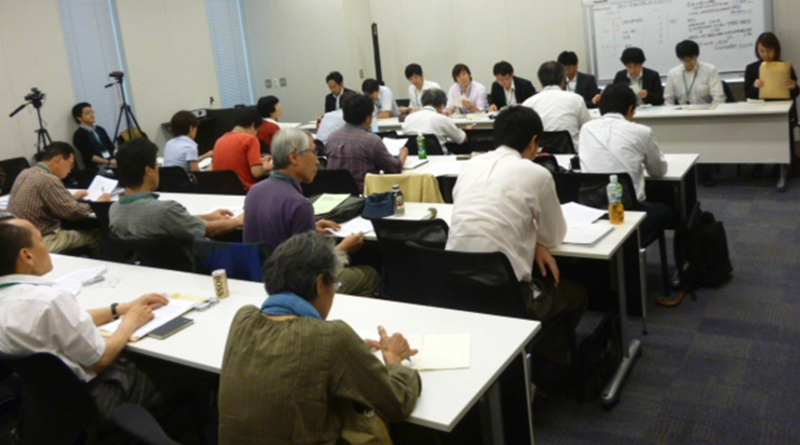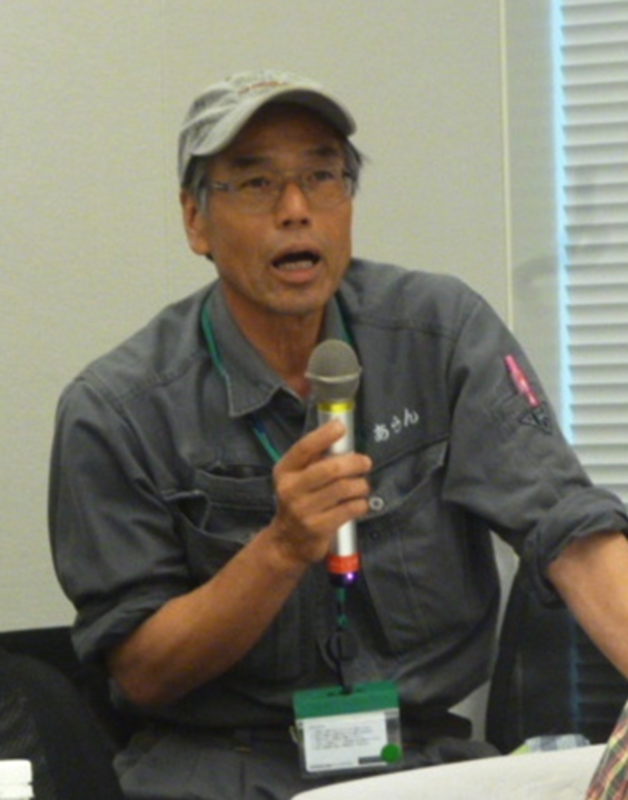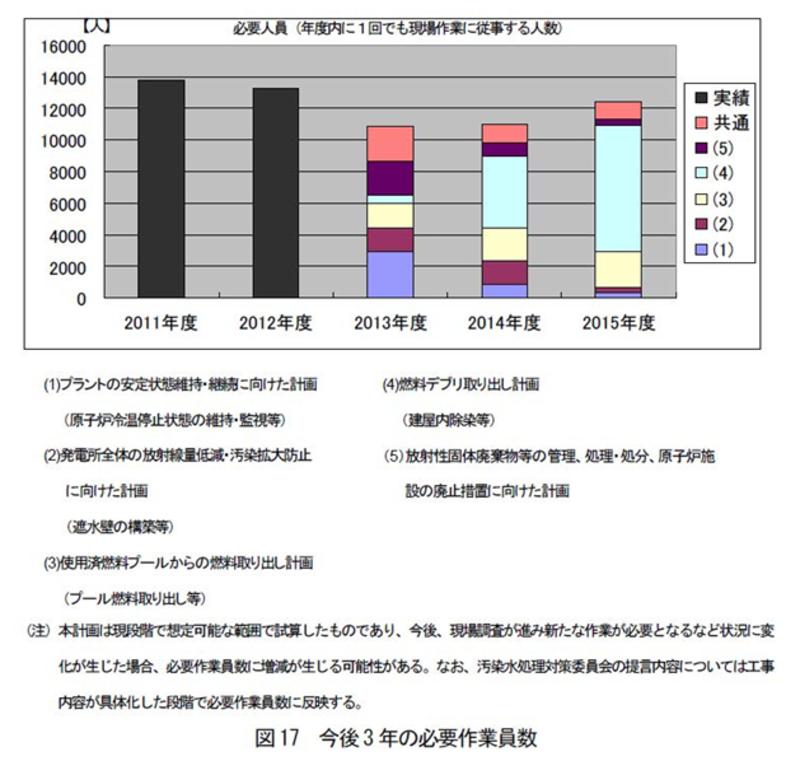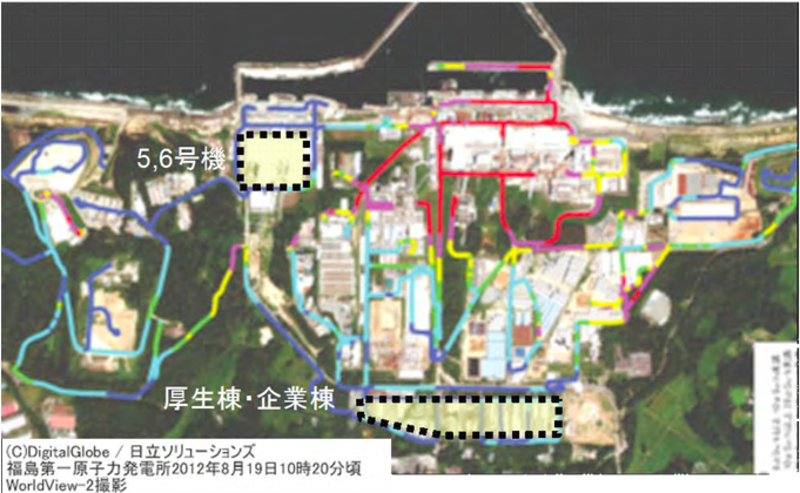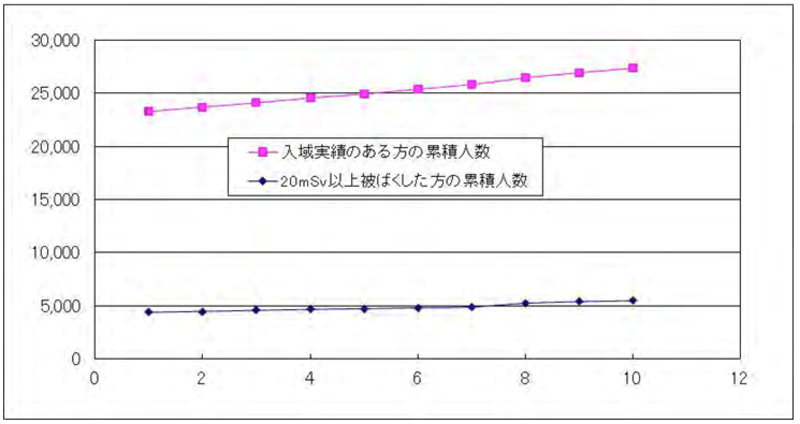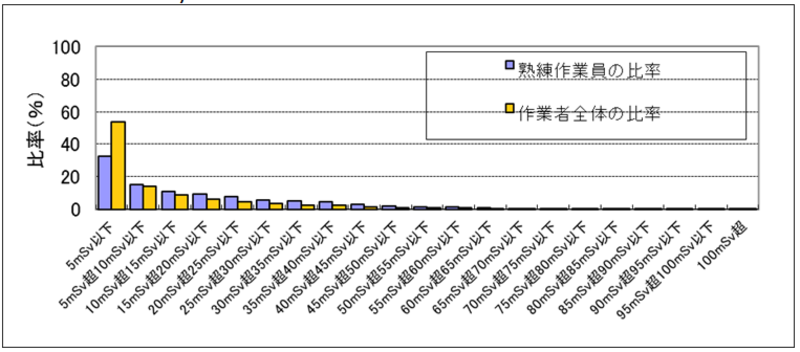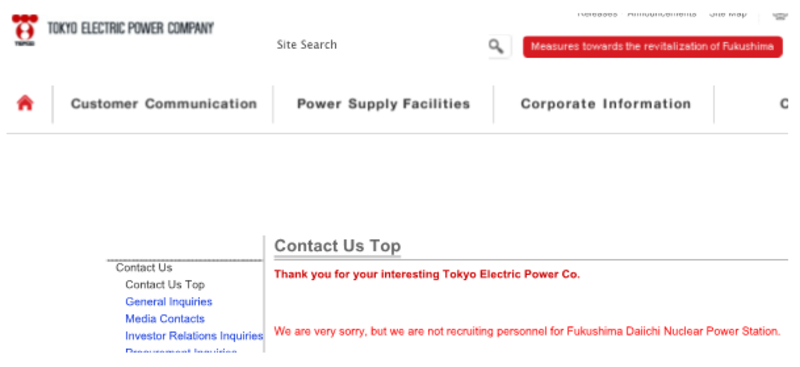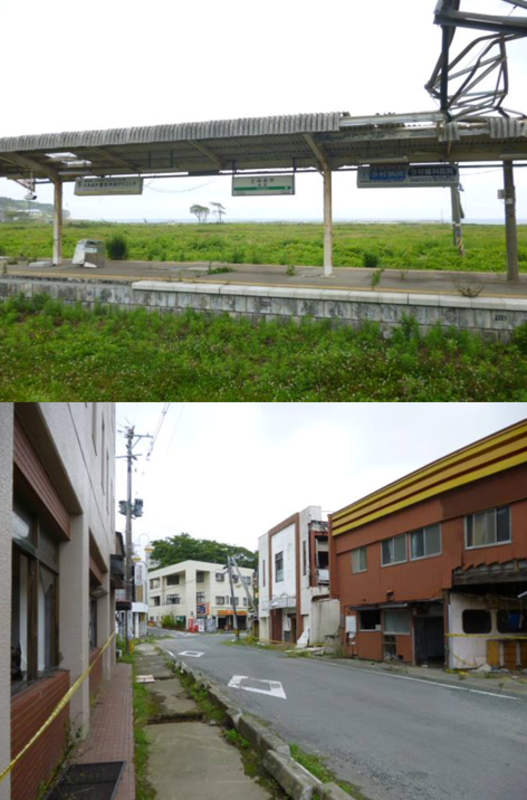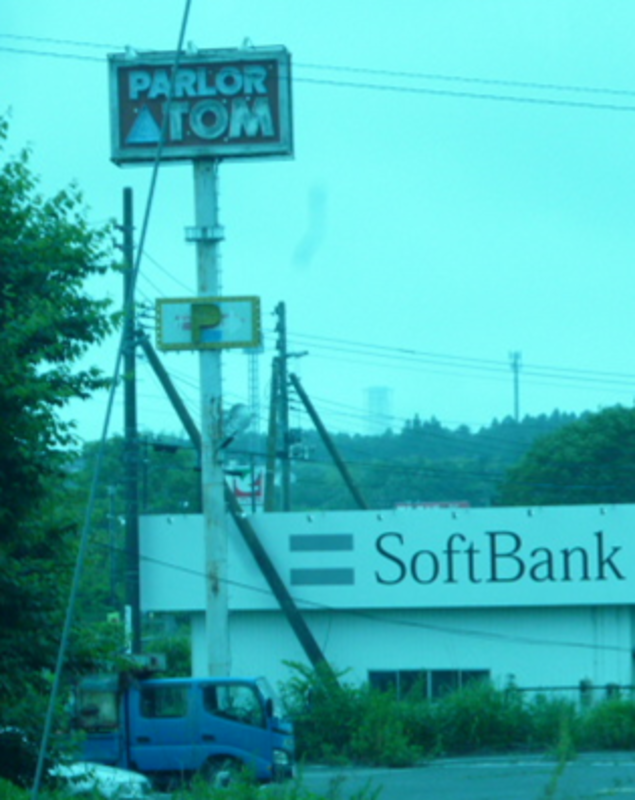Keywords: Fukushima, nuclear meltdown, liquidators, contract workers, radiation hazards
|
|
During his June 2013 visit to Poland, Prime Minister Abe Shinzo highlighted the crisis management of the post-3.11 Fukushima Daiichi nuclear power plant as an argument for the sales and promotion of Japanese nuclear technology.1 A few weeks before, the French company Areva mobilized to promote cooperation with Japan Nuclear Fuel Ltd, Atox and Hitachi-GE during French President François Hollande’s visit to Japan.2
These micro signals of another “nuclear renaissance” have provoked some outrage in Japan, for example from former Prime Minister Kan Naoto who branded the trend “disgusting” and even Abe’s wife who openly declared her opposition to the restart of other nuclear plants. In other countries such as Turkey, Saudi Arabia and Vietnam, these efforts have thus far met no success.3
|
|
Nevertheless, despite repeated significant leaks of strontium or caesium into the Pacific from Fukushima Daiichi, the “Abenomics boom” has prompted a strong offensive of the nuclear lobby and government plans to reopen Japan’s closed reactors.4 In this context, it is worth remaining alert to the “crisis management” of Fukushima Daiichi (hereafter F1 as the workers have come to call it).
A shortage of personnel
On June 20 and June 24, labor NGOs and civic groups held another round of negotiations with the government concerning working conditions at F1 and for those employed in decontamination work, as well as public health issues related to radiation exposure both for workers and citizens, particularly in Fukushima prefecture.5
Following up on the request they made at the last meeting in February, they again pressed the Ministry of Health and Labor to conduct its own surveys on working conditions at F1 instead of relying almost exclusively on the information provided by TEPCO.6
Nakamura Mitsuo, a labor activist working with day laborers in the
An officer argued that in a general context of harsh budget restriction because of administrative reform, the Ministry lacks personnel, and it
An important question is whether TEPCO has faced similar restriction of personnel. For the last two years, we have repeatedly been told that an average of 3,000 workers
How many people are now working in F1?
On June 27, TEPCO presented another version of its roadmap for
According to the report presented by the government,8 the total task force on the site will not be increased, with TEPCO and its “partners” planning to keep the annual range of workers between 10,000 and 12,000 until 2015. This compares to nearly 14,000 in 2011 and 2012. (See graph 17). The number of those employed in the control of the cold shutdown of the reactors and the treatment of contaminated water9 will progressively decline with the transfer of workers to increase the taskforce carrying out the extraction of the spent fuel rods and fuel
debris (corium) from the reactors and the cooling pools. These operations are complicated by the damage caused by the hydrogen explosions—which make necessary rebuilding the containment buildings and the cranes to remove the spent fuel and the debris—and the high radiation inside and near the reactors making it even difficult to use robots (a pick radiating 73 Sv per hour was observed at unit-2 in March 2013; a lethal dose starts at around 5 Sv). These operations are expected to start in November 2013 for unit-4, 2015 for unit-3 and 2017 for units 1 and 2; at unit-2, the removal of corium might not start before 2024.10 Decontamination of the entire site will take around 30 years at the most optimistic projection, probably a few decades more.
|
Graph 19 Number of workers exposed to radiation and those entering the site 図19 被ばく者数と新規入域者数の比較 Pink indicates workers entering the site; black the number of workers exposed to 20 mSv or more. |
The recently published World Nuclear Industry Status Report 2013, which presents a brilliant synthesis of the situation at F1, notes that priority is given to the removal of the fuel rods from the cooling pool of unit-4, due to the threat of a worst case scenario (as posited at the end of March 2011 by the Chairman of the Japan Atomic Energy Commission, a collapse of the unit-4 pool would require the evacuation of the population within a 250 km perimeter, depending on the winds).11
From July 2012 to April 2013, the total number of people who entered the site increased from around 24,000 to 27,000. As levels of radiation remain high on the site (see the radiation mapping on the aerial photo), it is not surprising that more than 5,000 people have been exposed to a dose exceeding 20 mSv. Even if the rate of increase in those exposed to that level of radiation has decelerated, compared to the situation before 3.11, the numbers are striking: from 2003 to 2009, only 21 workers employed in all Japanese nuclear plants had been exposed to an annual dose above 20 mSV a year.12 This simple comparison helps to convey an idea of the drastic working conditions at Fukushima Daiichi, despite repeated declarations made by TEPCO and the government proclaiming the site safe and stable as a means to assure future restarts of other plants.
Another important point to keep in mind is the use of 20 mSv a year as a practical marker for the management of external radiation.13
Where are the skilled workers?
Another interesting figure (graph 20) indicates that skilled workers have been exposed to higher levels of cumulative radiation. However, the details of this graph are hard to convey, and are not necessarily consistent with the data presented above (showing that around one fourth of the task force has been exposed to a cumulative dose of 20 mSv). (See Graph 20) Ignoring the issue of how the health check follow-up will be implemented for all workers, whatever their skills (and ignoring the fact that a much higher percentage of ordinary workers have been exposed to 5 mSv or more), the comment for the graph focuses on the necessity to train the next generation of skilled workers. This should be indeed a matter of concern, but as we will see below, TEPCO’s policy on this matter is far from coherent.
On the eve of the TEPCO presentation, I met again with T.S., in Iwaki, a city 40 kilometers from F1, where I first met him in June 2011. A native of Tomioka (near F2) where he lived before the disaster, a skilled worker in his thirties, he has been employed for the last ten years by a local contractor of Tōshiba, performing maintenance tasks on the reactor vessels in several plants, mainly for TEPCO at F1 and F2. By mid-March 2011, he had returned to Fukushima Daiichi at the request of his employer, feeling responsible and concerned about what was going on,14 and for the next two years he worked at the site.
T.S. is no longer employed at Fukushima
|
|
The fact that his cumulative external radiation had reached 70 mSv, and he was found to have 10 mSv of internal radiation at his last WBC check, might have caused him to be sidelined. In any event, TEPCO is trying to reduce the number of those exposed to levels of radiation above 20 mSv under pressure from the Ministries (though this pressure is very limited).
According to Watanabe Hiroyuki, an Iwaki city councilor and a member of the Japan Communist Party, at the end of 2012, many former local subcontractors like the employer of T.S. were informed that TEPCO planned to reduce the taskforce on the site because of “budget restrictions”, so that even level 2 or 3 subcontractors were compelled to lay off many employees. For example, in one case, a company kept only 70 people out of its former taskforce of 300.15 If confirmed, this would be a clear sign that the number of skilled workers at F1 has drastically decreased.
|
|
Two workers—let’s call them Wada and Satō—confirm this.16 Wada is a plumber in his fifties, who is usually employed on construction sites. Though he had no experience in nuclear plants, since plumbing is a skill that is required for the maintenance of power plants, he was recruited from his home in Kyūshū in March 2012. He worked at F1 for one year before shifting to a decontamination job outside F1 because he was tired of the wage skimming (pin hane: though told that he would receive 15,000 Yen per day, he never got more than 12,000) and the living conditions were horrendous: the dormitory where he was sent had no kitchen or bathroom, and only a sleeping-bag was provided.
Wada was shocked to find that only one out of five workers had a particular skill applicable to working at F1; he did not mean experience with nuclear plants since he himself had
Until last year, the reactor and turbine makers Tōshiba and Hitachi-GE were the main commanders (moto-uke) of the chain of subcontractors (shita-uke). According to T.S., big construction companies like Kajima, Taisei, Shimizu and Takenaka now control most of the recruitment chain at F1. This means that at the bottom of the chain, the yakuza have increased their control over recruitment, taking over from the small and medium companies that had regular contracts with Tōshiba and Hitachi.
|
|
While working at F1, another contract worker told Wada that if he was to place his employer in the chain, it would be more than 12. It is well known that multiple levels of contracting companies implies tremendous wage skimming: for example, for a worker like Wada to be paid 12,000 a day, TEPCO must budget ten times more. To capture the rationale for this elaborate pyramid of subcontractors we would need to review the story of the construction industry since the Meiji period, and observe how it influenced the development of the nuclear industry since the 1970s.
Working on a construction site is itself quite dangerous (in Japan and many industrialized countries, the construction industry has the highest rates of death and injuries). Given the exceptional radiation levels of F1, workers must wear a full protective suit (like Tyvek) and a full-mask in most areas, making it difficult to perform the job well and quickly, which is essential so as to limit radiation exposure as well as to avoid injury. According to the latest TEPCO report, occupational injuries at F1 decreased from a total of 59 in 2011 to 25 in 2012.17 But this depends on the definition of occupational injury.
The labor inspector of the Tomioka Labor Bureau, now relocated in Iwaki, refused to provide any data about claims made by workers employed at F1. This contrasted with the cooperative attitude of his predecessor during my previous visit with similar requests before 3.11.18 Watanabe Hiroyuki comments sharply on the labor bureaus in Tomioka and Futaba: “I don’t think they are willing to help the workers. They obviously protect TEPCO and its partners.”
For example, on 24 March 2011, to install electricity cables inside unit-3, a team of six contract workers was compelled to walk through highly radiated water (another team had refused to enter when they noted emission levels of 400 mSv).19 Soon after, all of them were laid off. With the help of Watanabe, two of them filed an action against Kōei Densetsu, the company right above which commands their employer and which is a subcontractor of TEPCO. As a result of that kamikaze mission, they had cumulated doses of 20 and 80 mSv respectively, so they asked the Tomioka Labor Bureau to certify that this was a radiation accident (hibaku jiko) according to the regulation. But the Bureau responded: “So far they have not gotten sick, so we cannot decide anything”.20
This calls into question the safety of the operations conducted at F1. This might not be so if the multiple levels of subcontracting were not the norm. After 3.11, pressed by the French Nuclear Safety Authority (ASN) on the problems caused by the multiple levels of subcontracting, AREVA and the French Electricity company EDF proposed to reduce to three the number of sub-contracting companies with direct authority for safety issues.21 The Japan Atomic Energy Commission has addressed a similar request: “The government and TEPCO should examine the suitability of conventional employment using second and third subcontractors to ensure workforce in long-term operations in the context [of F1]”.22 The information presented above, however, suggest that this is far from being implemented.
Former F1 cleanup workers and problems of decontamination
Since the skilled workers employed at F1 seem to end in decontamination work, let us conclude with the testimony of Masato (pseudonym), a labor activist in his twenties who formerly organized day laborers in the
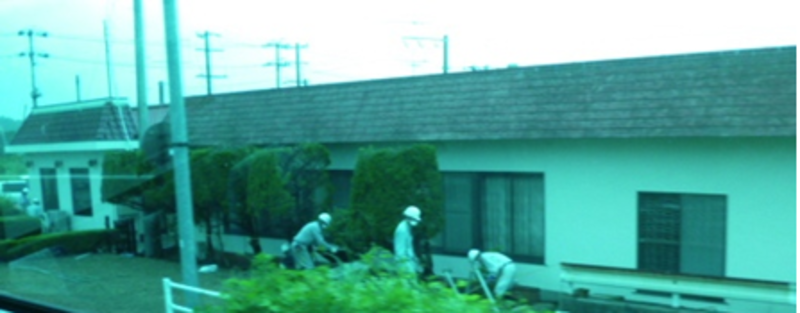 |
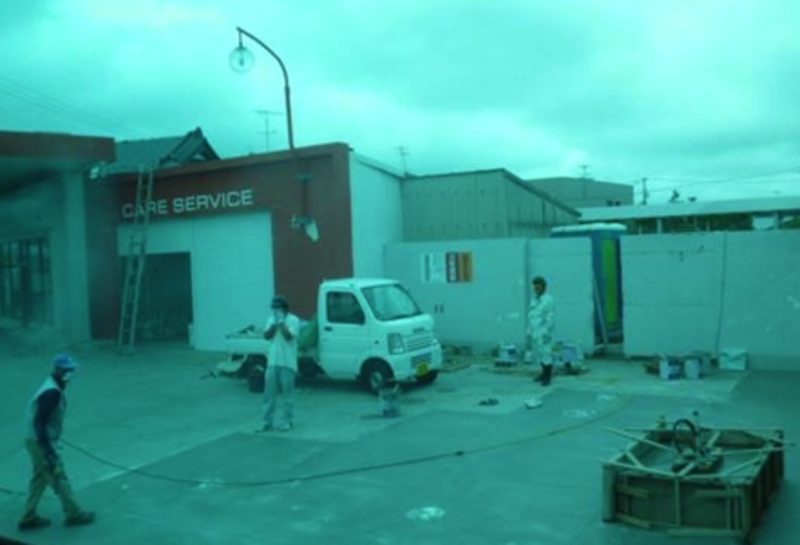 |
|
Decontamination work in Tomioka, 29 June 2013 (Photo: P.Jobin) |
The labor organization of decontamination work shares many similarities with the
- Public bids are now almost entirely controlled by the construction companies at the top (moto uke) and the yakuza at the bottom;
- Though the Ministry of the Environment only authorizes two levels of subcontracting, in practice, the levels of subcontracting are even more numerous than at F1 and other nuclear plants. Between his own employer and Shimizu Construction, the moto uke, Masato has counted 24 levels;
- Wage skimming is the norm and many workers only get a tiny portion—if any—of the 10,000 Yen hazard allowance;
- The majority of workers receive no health insurance benefits from their employer and for many reasons they do not register for the national health insurance system on an individual basis.
The 2012 regulations of the Ministry of the Environment stipulate that below an air emission of 2.5 microSv per hour, the employer has no obligation to provide protection suits (like Tyvek) to the workers.24 This means that decontamination work should be decided on the basis of precise radiation mapping. But in the areas of Tomioka and Iwaki where he has been working, Masato has never seen a worker wearing a Tyvek suit. Following the 2012 regulations, the workers received only a surgical mask, a pair of cotton gloves and a helmet. The core problem is that workers have no access to the radiation mapping made before they enter the zone.
Another tricky point is that the team boss or foreman (one for 5 or 10 workers on average) is the only one with an alarm pocket dosimeter (APD). At the end of the working day, the workers write down or input in a computer the doses recorded by the team boss (between 2 and 7 microSv a day), as if they were the specific doses that each of them had been exposed to. But such collective record cannot but be a very rough estimate of what each worker has individually been exposed to since they may unknowingly approach hot spots while the team boss keeps away.
In contrast, each worker wears a glass badge to record his own individual cumulative dose of air radiation, and it is changed every month. On first entering the decontamination zone, then once every three months, they must go through a whole-body-counter check for internal radiation. They are not, however, given a copy of these results, only informed that “everything is all right, you can keep working.”
 |
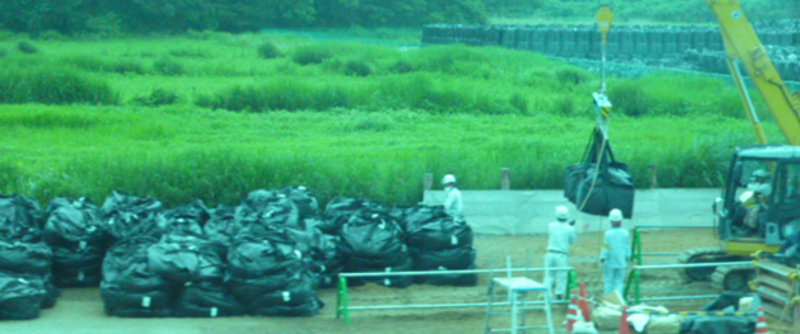 Contaminated soils and vegetation collected in plastic bags and stocked on vast areas of land (near Tomioka, 29 June 2013) (Photos: P.Jobin) |
The labor organization of decontamination work has therefore many similarities with the structure of labor at F1 and other nuclear plants before 3.11. As we have seen, a major obstacle to the application of labor laws to this population of workers is the hypocrisy of the state ministries and agencies that are supposed to control their employers. Another obstacle is the complete disinterest of big unions like Rengō: the federation Denryoku Sōren only protects the interests of TEPCO employees and other electricity companies while the federation Denki Rengō is concerned only with the employees of reactors and turbine makers like Tōshiba, Hitachi-GE, and IHI. This is why Rengō does not send any delegate to the negotiations with the ministries (mentioned in the introduction).
Paul Jobin is Director, French Center for Research on Contemporary China, CEFC, Taipei Office, Associate Professor, University of Paris Diderot, and an Asia-Pacific Journal Associate.
Recommended Citation: Paul Jobin, “The Roadmap for Fukushima Daiichi and the Sacrifice of Japan’s Clean-up Workers,” The Asia-Pacific Journal, Vol. 11, Issue 28, No. 2, July 15, 2013.
Related articles
•Sawada Shoji, Scientists and Research on the Effects of Radiation Exposure: From Hiroshima to Fukushima
• David McNeill,
• Kerstin Luckner and Alexandra Sakaki, Lessons from Fukushima: An Assessment of the Investigations of the Nuclear Disaster
• Sumi Hasegawa, Paul Jobin, An appeal for improving
• Anders Pape Møller and Timothy A. Mousseau, Uncomfortable Questions in the Wake of Nuclear Accidents at Fukushima and Chernobyl
• Iwata Wataru, Nadine Ribault and Thierry Ribault, Thyroid Cancer in Fukushima: Science Subverted in the Service of the State
• Gabrielle Hecht, Nuclear Janitors: Contract Workers at the Fukushima Reactors and Beyond
• Paul Jobin, Fukushima One Year On: Nuclear workers and citizens at risk
• David McNeill, Crippled Fukushima Nuclear Power Plant at One Year: Back in the Disaster Zone
• Cara O’Connell,
• Matthew Penney, Nuclear
Notes
1 Philippe Pons, “Le Japon se prévaut de la “leçon” tirée de Fukushima pour vanter son nucléaire”, Le Monde, 19 June 2013.
2 Philippe Mesmer, “Les électriciens japonais misent sur la relance du nucléaire”, Le Monde, 8 July 2013.
3 See Shūkan Spa, 16 July 2013.
5 NGOs include the Japan Occupational Safety and Health Resource Center/JOSHRC 全国労働安全衛生センター連絡会議), the Citizens’ Nuclear Information Center/CNIC 原子力情報室 and The Network to Consider Labor Exposed to Radiation 被ばく労働を考えるメットワーク which was created after 3.11 by labor activists engaged in the yoseba of Sanya and Kamasagaki ([email protected]) The state representatives were the Ministry of Health and Labor, the Ministry of Environment, the Ministry of Economy, the Nuclear Regulation Ministry, the Ministry of Education, Science and Technology, and the Reconstruction Agency. Video of the first meeting.
6 In December 2012, TEPCO presented a survey that acknowledged the practice of illegal recruitment of fully half of F1 contract workers. See Notes 13 and 14 of Gabrielle Hecht, “Nuclear Janitors”, Japan Focus.
7 Documents in Japanese: Here.
8 原子力災害対策本部、『東京電力福島第一原子力発電所廃炉対策推進会議,東京電力(株)福島第一原子力発電所1~4号機の廃止措置等に向けた中長期ロードマップ』、平成25年6月27日。TEPCO replied by mail (July 11) that an English translation is forthcoming.
9 5 m3 of water are pulled every day for cooling the reactors of units 1, 2, 3. See a video of these containers.
10 『東京電力福島第一原子力発電所… 中長期ロードマップ』、pp.17-21. Since this report, which I received from a government officer, is not yet online, I present graphs 17, 19 and 20 and the aerial photo of F1 with radiation mapping.
11 Mycle Schneider, Antony Froggatt et al., World Nuclear Industry Status Report 2013, p.65.
12 Statistics of the Radiation Effects Association 放射線従事者中央登録センター.
13 In December 2011, the maximum exposure standard was reduced from the emergency level of 250 mSv (set on March 14th) to the levels prevailing before 3.11, i.e. a maximum of 50 mSv and 100 mSv over 5 years. Even if 50 mSv a year is tolerated, a cumulative dose of 100 mSv over 5 years is the main target, so in practice it is better not to go beyond 20 mSv a year.
14 See his long interview by Hirokawa Ryuichi in Days Japan, June 2011.
15 Interview with Watanabe Hiroyuki 渡辺博之in his office at Iwaki City council on June 27, 2013. He has become well known for his engagement with the workers of Fukushima Daiichi. See numerous articles in Akahata, and his well-informed published presentation on nuclear plant contract laborers with photographer Higuchi Kenjii 樋口健二:『「最先端技術の枠を尽くした原発」を支える労働』、学習の友社、2012.
16 They presented their testimony at the end of a bus tour to Tomioka organized by Hibaku rōdō o kangaeru kai.
17 『東京電力福島第一原子力発電所… 中長期ロードマップ』、p.69.
18 During a research conducted in 2002. See P. Jobin, Back to Fukushima; « Fukushima ou la ‘radioprotection’. Retour sur un terrain interrompu », in A. Thébaud-Mony et al, Santé au travail: approches critiques, Paris, La Découverte, 2011, p.83-104; 「3.11事故以降の放射線防護」『大原社会問題研究所雑誌』、658号、2013.8、14-30頁.
19 Fore more details on that accident: Shinbun Akahata, 26.10.2012.
20 Interview of Watanabe Hiroyuki, 27 June 2013.
21 Évaluations complémentaires de sûreté – Rapport de l’Autorité de sûreté nucléaire – décembre 2011(PDF- 6,29Mo), p.211-220.
22 JAEC, 27 November 2012. And interview with Suzuki Tatsujirō, JAEC Vice-chairman, 2 July 2013.
23 Interview in Iwaki, 27 June 2013. To protect his identity (and allows him to continue this activity), Masato asked me to give minimal details on his union affiliation.
24 除染規則



